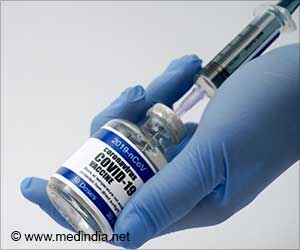A new sweat sensor developed acts as an early warning system for a looming COVID-19 cytokine storm. The cytokine storm is a surge of pro-inflammatory immune proteins, which could help doctors treat COVID-19.

‘Researchers developed an extremely sensitive method to measure COVID cytokine levels in tiny amounts of passive sweat.’





"Especially now in the context of Covid-19, if you could monitor pro-inflammatory cytokines and see them trending upwards, you could treat patients early, even before they develop symptoms," said Shalini Prasad, the project's principal investigator at the University of Texas at Dallas, US. For the new sensor called the SWEATSENSER Dx, the team made sensor strips with antibodies against seven pro-inflammatory proteins: interleukin-6 (IL-6), IL-8, tumor necrosis factor-I (TNF-I), TNF-related apoptosis-inducing ligand, IL-10, interferon-I-induced protein-10 and C-reactive protein.
They inserted the strips into their device and, in a small observational study, they tested them on six healthy people and five people with influenza. Two of the sick people showed elevated cytokine levels, and in all participants, cytokines in passive sweat correlated with levels of the same proteins in serum.
The SWEATSENSER Dx was sensitive enough to measure cytokines even in patients taking anti-inflammatory drugs, who excrete cytokines in the low-picogramme-per-millilitre concentration range. The device tracked cytokine levels for up to 168 hours before the sensor strip needed to be replaced, the researchers said.
The team now plans clinical trials of the cytokine sensor in people with respiratory infections.
Advertisement
The results were presented at the spring meeting of the American Chemical Society being held online April 5-30.
Advertisement















